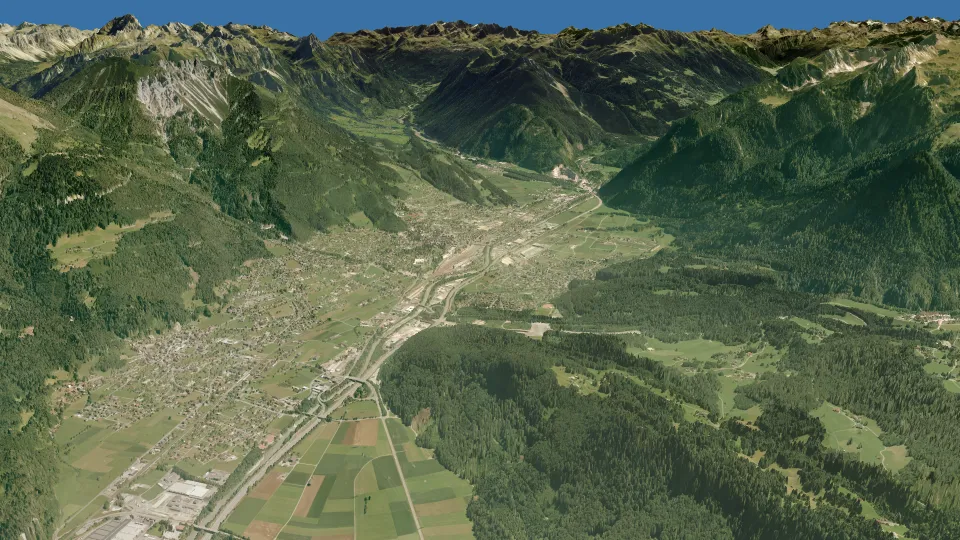GPU Ray-Casting for Scalable Terrain Rendering
Christian Dick, Jens Krüger*, Rüdiger Westermann
Computer Graphics and Visualization Group, Technische Universität München, Germany
*Scientific Computing and Imaging Institute, University of Utah, USA

Background
With the ever increasing resolution of scanned elevation models, geometry throughput on the GPU is becoming a severe performance limitation in 3D terrain rendering. In this paper, we investigate GPU ray-casting as an alternative to overcome this limitation, and we demonstrate its advanced scalability compared to rasterization-based techniques. By integrating ray-casting into a tile-based GPU viewer that effectively reduces bandwidth requirements in out-of-core terrain visualization, we show that the rendering performance for large, high-resolution terrain fields can be increased significantly. We show that a screen-space error below one pixel permits piecewise constant interpolation of initial height samples. Furthermore, we exploit the texture mapping capabilities on recent GPUs to perform deferred anisotropic texture filtering, which allows for the rendering of digital elevation models and corresponding photo textures. In two key experiments we compare GPU-based ray-casting to a rasterization-based approach in the scope of terrain rendering, and we demonstrate the scalability of the proposed ray-caster with respect to display and data resolution.
Acknowledgments
The high-resolution geo data of Vorarlberg was kindly provided by the Landesvermessungsamt Feldkirch, Austria.
Associated publications
GPU Ray-Casting for Scalable Terrain Rendering
C. Dick, J. Krüger, R. Westermann,
Eurographics 2009 [PDF][Bibtex]
Video
Vorarlberg [80 MB WMV]
For a high-resolution video, please also see our more recent paper "GPU-Aware Hybrid Terrain Rendering".